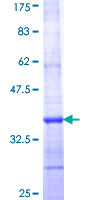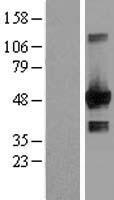order histories, retained contact details for faster checkout, review submissions, and special promotions.
Forgot password?
order histories, retained contact details for faster checkout, review submissions, and special promotions.
Locations
Orders Processing,
Shipping & Receiving,
Warehouse
2 Shaker Rd Suites
B001/B101
Shirley, MA 01464
Production Lab
Floor 6, Suite 620
20700 44th Avenue W
Lynnwood, WA 98036
Telephone Numbers
Tel: +1 (206) 374-1102
Fax: +1 (206) 577-4565
Contact Us
Additional Contact Details
order histories, retained contact details for faster checkout, review submissions, and special promotions.
Forgot password?
order histories, retained contact details for faster checkout, review submissions, and special promotions.
EGLN1 / PHD2
egl-9 family hypoxia-inducible factor 1
Cellular oxygen sensor that catalyzes, under normoxic conditions, the post-translational formation of 4-hydroxyproline in hypoxia-inducible factor (HIF) alpha proteins. Hydroxylates a specific proline found in each of the oxygen-dependent degradation (ODD) domains (N-terminal, NODD, and C-terminal, CODD) of HIF1A. Also hydroxylates HIF2A. Has a preference for the CODD site for both HIF1A and HIF1B. Hydroxylated HIFs are then targeted for proteasomal degradation via the von Hippel-Lindau ubiquitination complex. Under hypoxic conditions, the hydroxylation reaction is attenuated allowing HIFs to escape degradation resulting in their translocation to the nucleus, heterodimerization with HIF1B, and increased expression of hypoxy-inducible genes. EGLN1 is the most important isozyme under normoxia and, through regulating the stability of HIF1, involved in various hypoxia-influenced processes such as angiogenesis in retinal and cardiac functionality. Target proteins are preferencially recognized via a LXXLAP motif.
| Gene Name: | egl-9 family hypoxia-inducible factor 1 |
| Synonyms: | EGLN1, C1orf12, EGL9, ECYT3, Egl nine-like protein 1, HIFPH2, HIF prolyl hydroxylase 2, HIF-PH2, HIF-prolyl hydroxylase 2, ZMYND6, PHD2, SM20, EGL nine (C.elegans) homolog 1, Egl nine homolog 1, HPH-2, HPH2, SM-20 |
| Target Sequences: | NM_022051 NP_071334.1 Q9GZT9 |
Publications (42)





If you do not find the reagent or information you require, please contact Customer.Support@LSBio.com to inquire about additional products in development.









